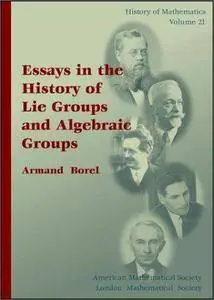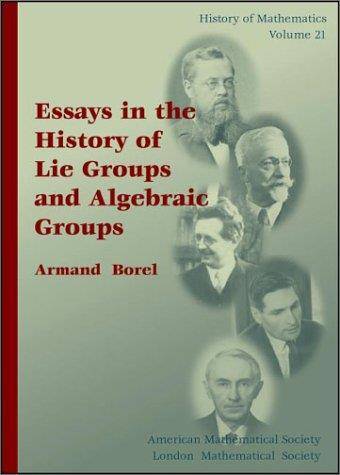Essays in the History of Lie Groups and Algebraic Groups By Armand Borel
2001 | 184 Pages | ISBN: 0821802887 | DJVU | 3 MB
2001 | 184 Pages | ISBN: 0821802887 | DJVU | 3 MB
Lie groups and algebraic groups are important in many major areas of mathematics and mathematical physics. We find them in diverse roles, notably as groups of automorphisms of geometric structures, as symmetries of differential systems, or as basic tools in the theory of automorphic forms. The author looks at their development, highlighting the evolution from the almost purely local theory at the start to the global theory that we know today. Starting from Lie's theory of local analytic transformation groups and early work on Lie algebras, he follows the process of globalization in its two main frameworks: differential geometry and topology on one hand, algebraic geometry on the other. Chapters II to IV are devoted to the former, Chapters V to VIII, to the latter. The essays in the first part of the book survey various proofs of the full reducibility of linear representations of $\mathbf{SL}_2{(\mathbb{C})}$, the contributions of H. Weyl to representations and invariant theory for semisimple Lie groups, and conclude with a chapter on E. Cartan's theory of symmetric spaces and Lie groups in the large. The second part of the book first outlines various contributions to linear algebraic groups in the 19th century, due mainly to E. Study, E. Picard, and above all, L. Maurer. After being abandoned for nearly fifty years, the theory was revived by C. Chevalley and E. Kolchin, and then further developed by many others. This is the focus of Chapter VI. The book concludes with two chapters on the work of Chevalley on Lie groups and Lie algebras and of Kolchin on algebraic groups and the Galois theory of differential fields, which put their contributions to algebraic groups in a broader context. Professor Borel brings a unique perspective to this study. As an important developer of some of the modern elements of both the differential geometric and the algebraic geometric sides of the theory, he has a particularly deep understanding of the underlying mathematics. His lifelong involvement and his historical research in the subject area give him a special appreciation of the story of its development



